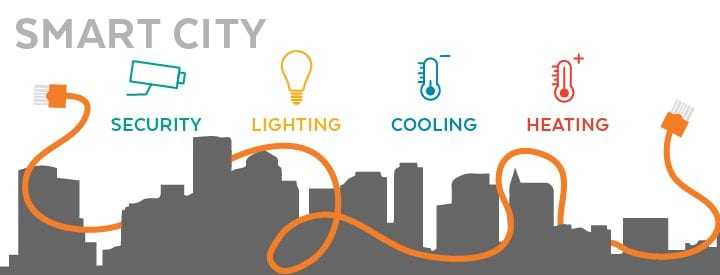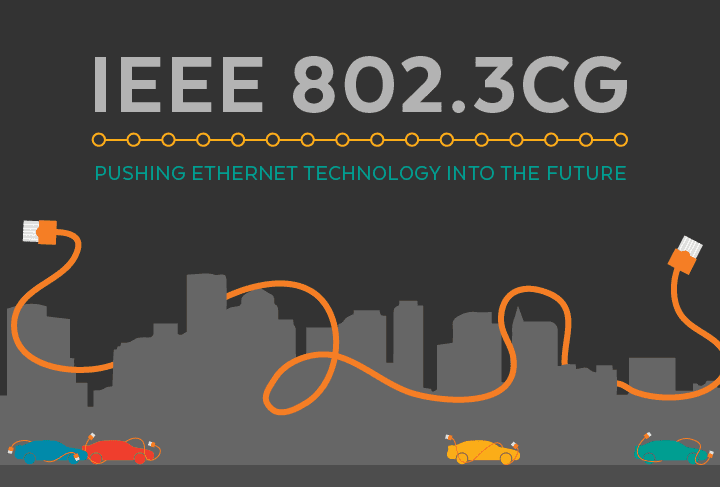Ethernet engineers have complicated work. Upgrading equipment, meeting budgets and deadlines, and ensuring maximum uptime all land in their wheelhouse.
 But if you could summarize the primary problem (and solution) in one word, it would be speed.
But if you could summarize the primary problem (and solution) in one word, it would be speed.
There’s no question that since 1985, there’s been a lot of progress made when it comes to network speed. This year, 400GB ethernet is set to be ratified.
And this is on a platform that many considered to be past its prime.
In reality of course, ethernet as a technology is still on the rise, its growth being fueled by developers in some surprising industries.
But first, let’s take a look at some of the latest developments. Then we’ll get to those exciting new uses of ethernet technology.
New Standards Are on the Way
Last March, the IEEE Standards Association announced the approval of New Ethernet Applications, an IEEE-SA Industry Connections (IC) Program activity. Their goal is to quickly identify and address standards development requirements to support the growing list of broader uses of IEEE 802.3.
As more industries get involved the calls for standards-based Ethernet solutions get more insistent. The chair of the New Industry Applications IEEE-SA IC project, John D’Ambrosia, is currently collaborating on the 802.3cg standards.
This meeting-of-the-minds will address the need for a clear and focused roadmap for the near-term future. With so many technologies leveraging Ethernet and benefitting from recent improvements, additional considerations are necessary.
In short, since there are a wider range of products relying on Ethernet, the need for new standards is growing. Look no further than the standardization related to 2.5 Gb/s, 5Gb/s, and 25 Gb/s Ethernet.
The following are among the key goals of the 802.3cg collaboration:
- Assess emerging requirements for the development of Ethernet standards
- Identify gaps not currently addressed by IEEE 802.3 standards
- Facilitate building industry consensus towards proposals to initiate new standards development efforts
How this collaboration shakes out? We’ll have to wait and see. But we’re excited to see momentum taking the industry in this new direction.
What’s Fueling the Growth?
Ethernet is a great technology to leverage in order to lower operating costs. It’s one of the many reasons it’s being leveraged across a wider range of industries than ever before.
The growing profits in the pockets of ethernet equipment manufacturers, in turn drives further investment in R&D.
In manufacturing and design, for example, the LED lighting boom has been substantial. It’s brought about the development of both bulbs and systems that emit a more natural type of light. The benefits of this lighting are many, and can include better:
- Productivity
- Well-being and morale
- Energy cost-savings
Providers like Philips have directed increasing amounts of revenue and resources into the development of these technologies.
That is how we as an industry have gotten to this moment.
Now, let’s take a look at some of the verticals and technologies are that now have the opportunity to shape the discussion and formulate these additional standards.
New Applications of Ethernet Technology
This broader and more varied IEEE 802.3 scope includes (NG-ECDC) Industry Connections Next Generation Enterprise, Campus, and Data-Center activity. Next generation IT includes greater scalability, self-analyzing features and as with all Ethernet applications–cost effectiveness.
Study of these features has led to the 802.3cg a Standard for Ethernet Amendment: Physical Layer Specifications and Management Parameters for 10 Mb/s Operation over Single Balanced Twisted-pair Cabling and Associated Power Delivery.
In a nutshell, the team is identifying areas that represent growth opportunities in the following areas.
1. Ethernet technology in the automotive industry
Driver assistance by way of rear view cameras is one place Ethernet solutions are already mainstream. Car audio and video systems, wireless access points, security systems and diagnostics are all features that ethernet technology either enables or enhances.
Last but not least, the computerized systems that enable driverless technology are connected by (and dependent upon) Ethernet.
 2. Smart city technologies
2. Smart city technologies
Smart cities are both connected and sustainable. The goal of the smart city, is to make the most of lighting, heating and cooling, and provide increased security through deployment of poe remote cameras in public spaces.
The Top 10 US Sustainable Cities include New York, Boston, San Francisco, and Seattle. Part of that sustainability is judged by how well the city supports the people who live there. It’s about quality of life and Ethernet is definitely playing a role in that quality.
 3. The evolution of the datacenter
3. The evolution of the datacenter
Ethernet is also helping bring innovation to the datacenter.
Engineers are turning to this power and data solution for a whole host of purposes. These range from linking servers, network virtualization, virtual machine migration, video on demand, the IoT.
The draw is clear. Big data delivery without the increased power consumption. We recently covered hyperconvergence as well, an exciting innovation in the space.
 The Longview | A Smarter World Connected By Ethernet
The Longview | A Smarter World Connected By Ethernet
While putting together a more inclusive set of Ethernet standards, collaborators must consider a few key items. Of paramount importance, are the implications of the autonomous technologies being implemented in the driverless car.
How much of the IoT will become robotic? How many autonomous devices will be in our homes?
Make no mistake, the number of connected and powered devices will increase in the future. Just take a look at the meteoric popularity of the Amazon Echo. An ethernet connected home is no longer relegated to the realm of the science fiction author.
We can’t wait to see what’s next, and what new standards help pave the way to greater advances.
If you’re currently working on an Ethernet project and would like some help choosing the right device for your customer, reach out. We’re always happy to help.

